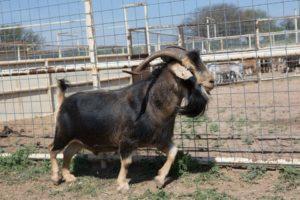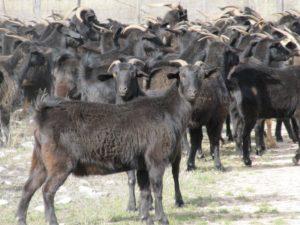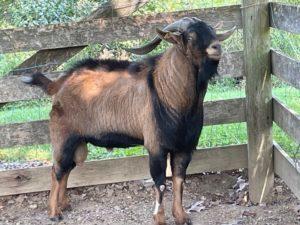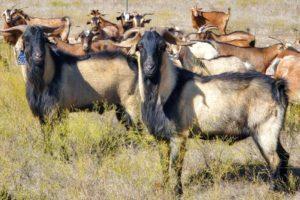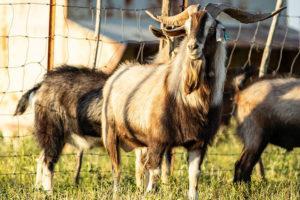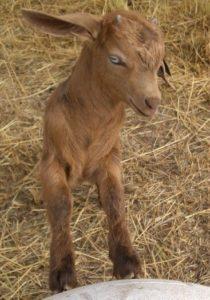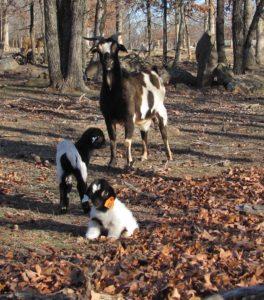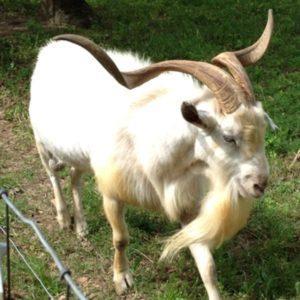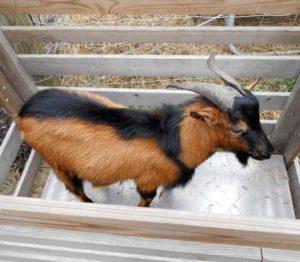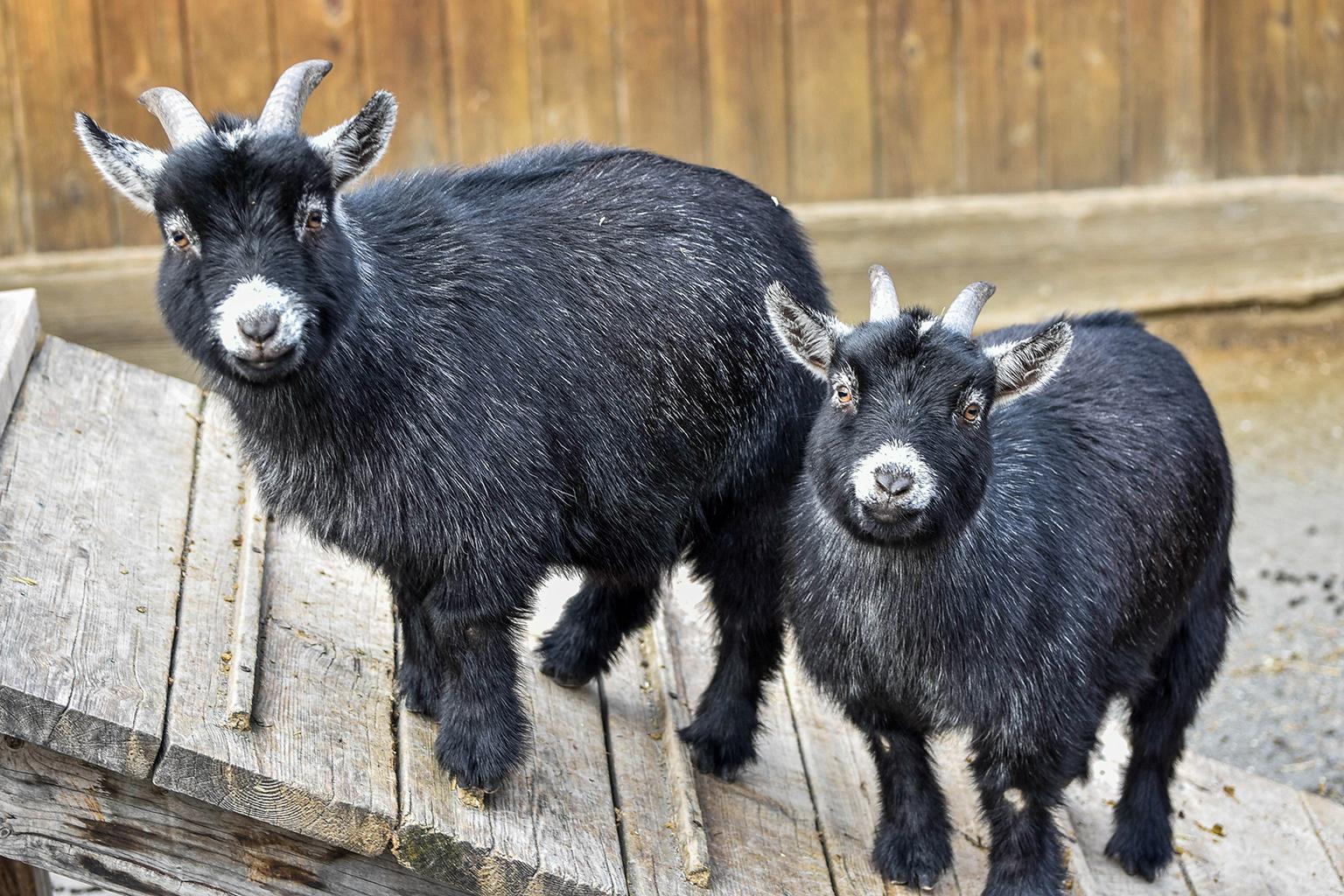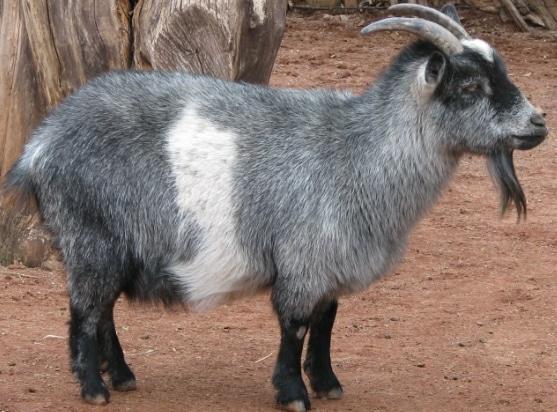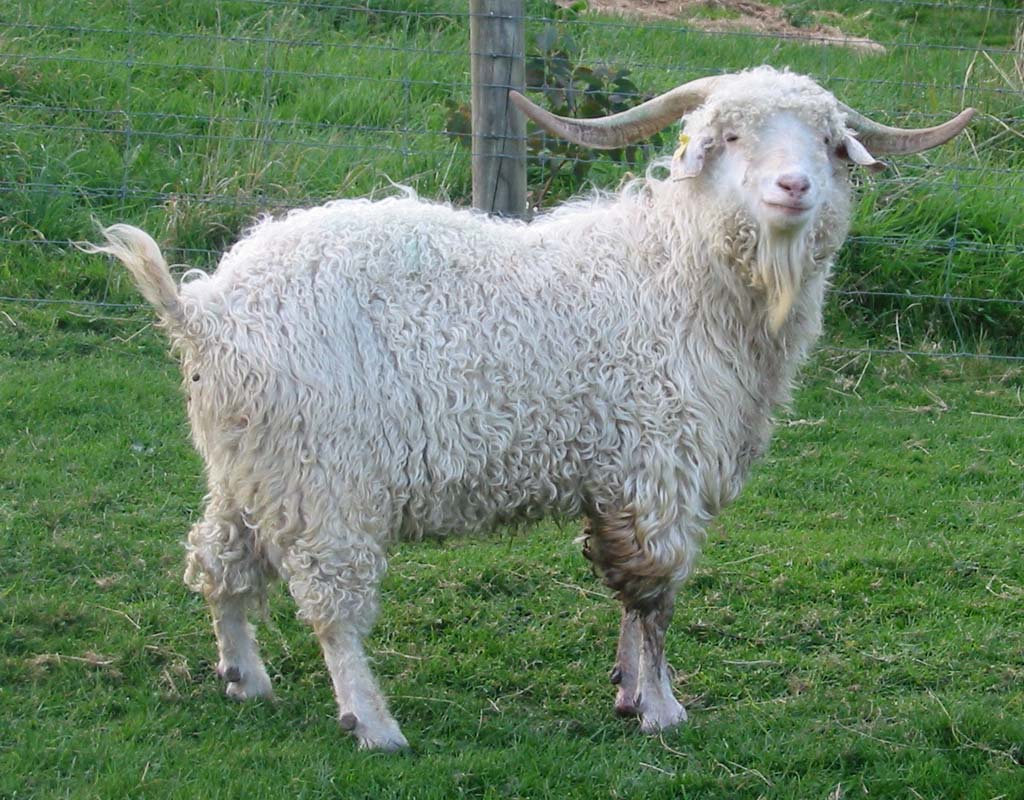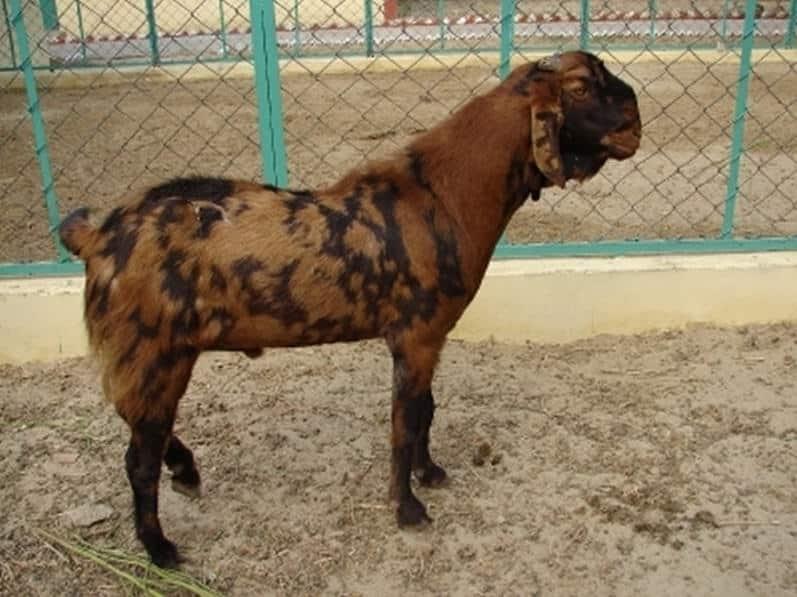Spanish Goat
Spanish Goat, as its name suggest, is indigenous to Spain, later introduced to the Americas, mainly the United States and parts of Mexico, by the Spanish settlers. They have been referred by a variety of names throughout, like bush in North Carolina, briar in South Carolina, wood in Florida, hill in Virginia, and scrub in Midwest Pennsylvania. Their primary use pertained to clearing bushes and several unwanted plants from the pasture lands. They were even regarded as great meat goats until the 1980s, after which the Boer goats surpassed them in meat production.
| Also Known As | Scrub goat, brush goat, briar goat, hill goat, wood goat |
| Physical Characteristics | Beautiful appearance, large, twisted horns ( mainly seen in bucks), large ears held horizontally close to their head, concave or straight face. |
| Temperament/Personality | Curious, active, and energetic, but docile and calm when socialized or tamed |
| Color | Various colors like brown, black, gray, white, black |
| Coat | Short or long-haired with fringes on the lower part of their body and even thighs |
| Weight | Bucks: 91 – 113 kg (200 – 250 pound) Does: 45 – 68 kg (100 – 150 pound) |
| Height | 43 – 64 cm (17 – 25 inches) |
| Uses | Brush clearing, and meat production |
| Diet | Herbivores, eating grass, shrubs, herbs, leaves, tree barks, and weeds |
| Lactation Period | Not recorded |
| Lifespan | 6 -7 years |
| Climate Tolerance | Can adapt to harsh climatic conditions |
| Country of Origin | Spain, brought to the United States and Mexico in the 1500s |
| Standard and Qualification Information | Spanish Goat Association, American Livestock Breed Conservancy |
History and Development
During the 16th century, these goats were moved out of their native land. Spanish explorers brought them along to some regions of the Caribbean Islands and even to areas that later went on to be the United States and Mexico. The foundation stocks endemic to Spain exist no more. The recent versions are the products of the bloodlines that migrated to the New World. There is a lot of confusion over the name, as “Spanish goat” referred to breeds introduced or developed in and around Spain.
Over time, they went on to adapt to the conditions of their surroundings, with some turning into homesteaders bred for meat, hide, hair and milk, while a few going feral. These goats have an increased level of adaptability to withstand adverse climatic conditions, be it intense heat or even extremely damp weather.
In the early 19th century, these were the only goats in the United States. However, their popularity eventually decreased due to several reasons. When the Angora goats occupied the Spanish goat’s habitat, the former took up the latter’s task of clearing the underbrush.
The population has been on a rapid decline since the early 20th century, one prominent reason being the introduction of the Boer goat in the United States, considered prospective and better meat producers than the Spanish goats.
Thus, several breeders preferred raising the boer goat or their crosses to the Spanish variant, taking a toll on their population with just 8500 purebred Spanish goats left in 2009.
Due to a steep reduction in their numbers, this breed became one of the leading conservation priorities of the ALBC (American Livestock Breeds Conservancy).
At present, the ALBC is functioning effectively in locating these goats’ populations and preserving their strains. Of late, a strain of this breed was spotted in one of South Carolina’s islands, and initiatives were implemented in preserving the same. The Spanish Goat Association developed in 2007 aimed at conserving these goats.
Meat Production
The increased demand for goat meat over the years has compelled experts to research the meat-producing qualities of Spanish goats. Though hardy, these goats have proved to have a low input compared to the other meat-producing varieties. They have been crossed with other imported goats for better meat and cashmere production. Increased crossbreeding has, however, affected their population big time.
Milk Production
They are not too good at milk production; the small-sized teats and udder of the female goats are possibly the reason for the same.
Kidding
The Spanish goats have no specific season and can breed at any time of the year. The highly fertile does mostly give birth to twins or sometimes even triplets after a 155 day gestation period.
The strong, hardy does need no assistance during the birthing period and displays wonderful mothering traits when nurturing their kids.
Interesting Facts
- A purebred Spanish goat costs between $300 and $350, females coming for a little higher price than their male counterparts.

